The wave goes beyond the horizon: the Soviet tropospheric radio relay link "North"

Recently we wrote about European radio relay communication lines used mainly for the needs of stock trading. Their length is several hundred kilometers. But today, few people know that in the Soviet Union a tropospheric radio relay line with a length of more than 13,000 km was built, spanning our northern and Pacific coasts, as well as stretching along the Ob, Yenisei and Lena rivers.
What is tropospheric radio?
In the 1940s and 50s, scientists substantiated and studied the possibility of trans-horizontal propagation of a radio signal: when the receiver and transmitter are so far from each other that they cannot communicate in a straight line due to the curvature of the planet and difficult terrain. Instead, the signal is not directed towards the receiver, but at an angle to the sky, and radio waves at an altitude of 10–15 km are reflected (re-emitted) from the upper boundary (conventionally) of the troposphere and enter the receiver. Due to this, the distance between the receiver and the transmitter can reach 400-600 km.

')
Of course, the description is very simplified, and in life everything is much more complicated: the border passes at different heights depending on geographic latitude, the height of the “reflecting layer” constantly fluctuates, the signal is reemitted in a wide range and greatly attenuated, which requires powerful transmitters and large antennas and so on.
Military and peaceful construction
Like all the most advanced technologies, tropospheric radio relay communications originated in the military environment. In the 1950s, the Pentagon was concerned about the increased range of the Soviet bomber aircraft, which could already have launched a bombing attack on the United States through the North Pole. However, the Americans could not find out about the approach of the bombers - they simply had nothing to detect. And so in 1954, construction began on the DEW line , an early warning radar network. And to ensure communication between the radar stations and the command center, the deployment of tropospheric radio relay lines began.
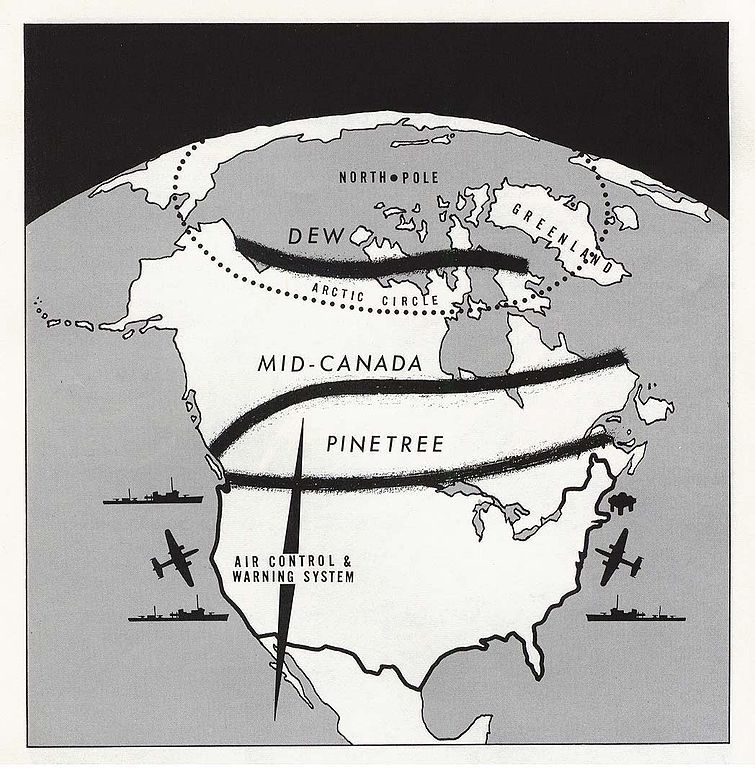
In the USSR, with its gigantic inaccessible regions, the colossal northern coast, which is almost entirely located beyond the Arctic Circle, the problem of transport and communications was always acute. After the war, active development of the Far North and the Far East began, and the need for reliable communications became even more acute. Therefore, in the 1950s, we developed the equipment for radio relay stations Horizont. In 1961, the first improved version of the Horizont-M station (60-channel) was tested. After successful tests, the design of a communication line began, which was to primarily connect the territories of the Far North with the European part of the country.
TRRL "North"
Since 1966, in the most difficult conditions - extreme cold, permafrost, off-road, difficult terrain, deep snow cover, impassable taiga - the construction of a network of stations of the strategic tropospheric radio relay communication line (TRRL) " North " began. Construction continued until 1970, a total of 46 stations were built.
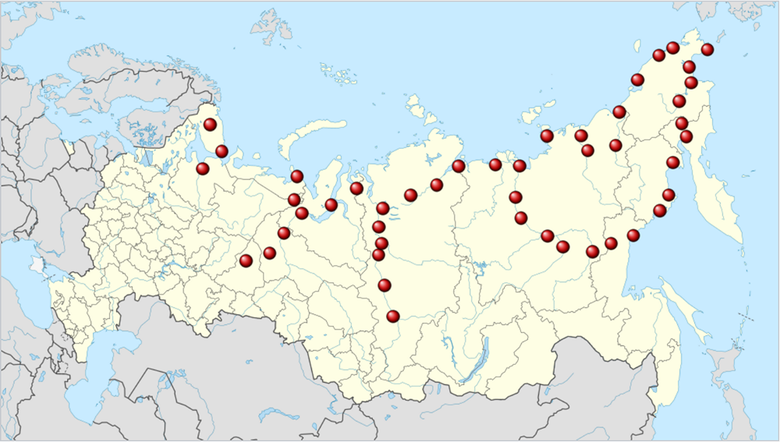

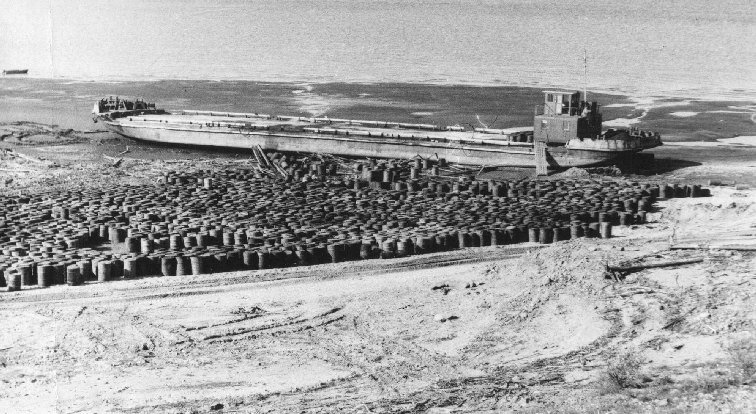

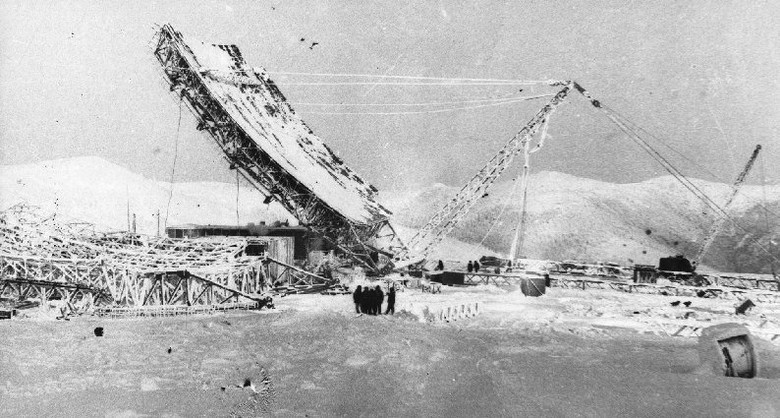
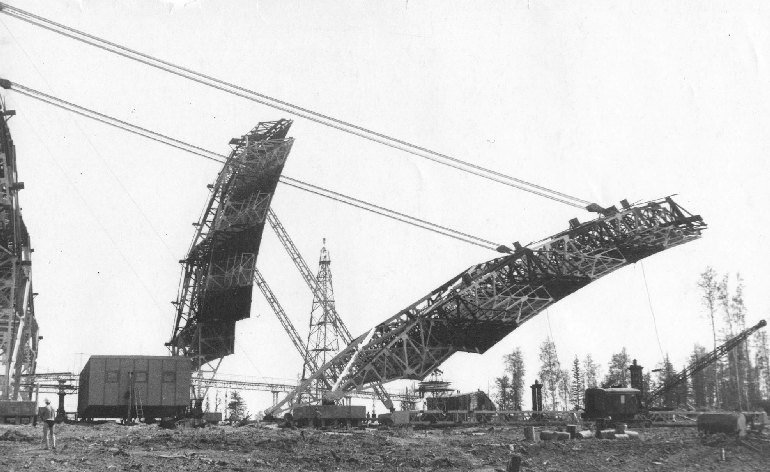

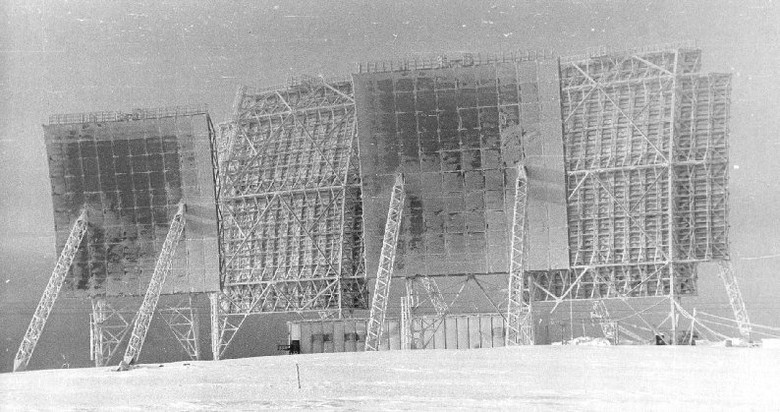
What was the typical Horizon M station?
First of all, this is an antenna complex consisting of huge parabolic antennas measuring 20x20 or 30x30 meters. The working range is 700-1000 MHz. The huge size of the antennas was due to a very strong attenuation of the signal in the decimeter and centimeter ranges. At the time of its creation, TRRL "North" was a real achievement of engineering thought.

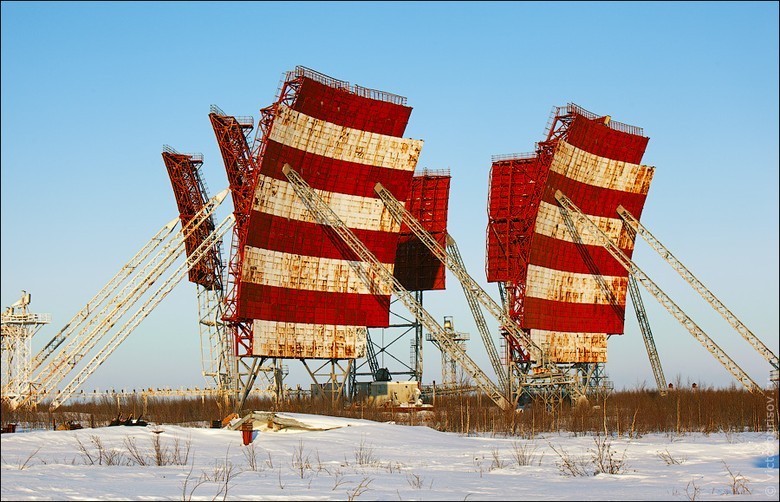
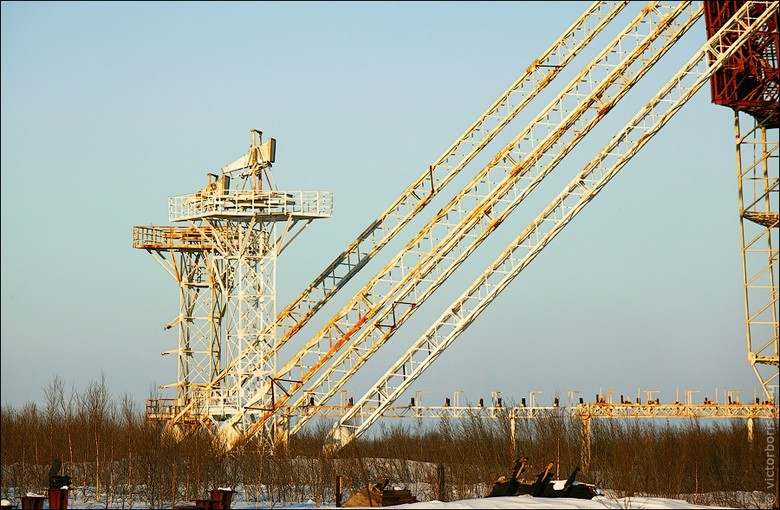
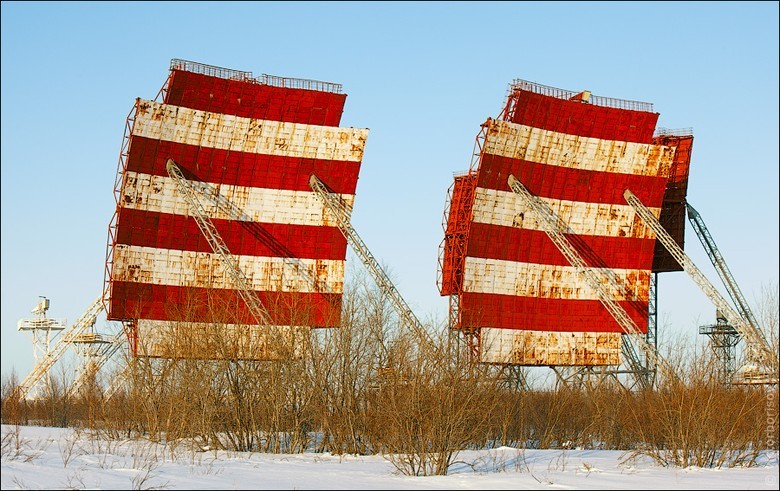
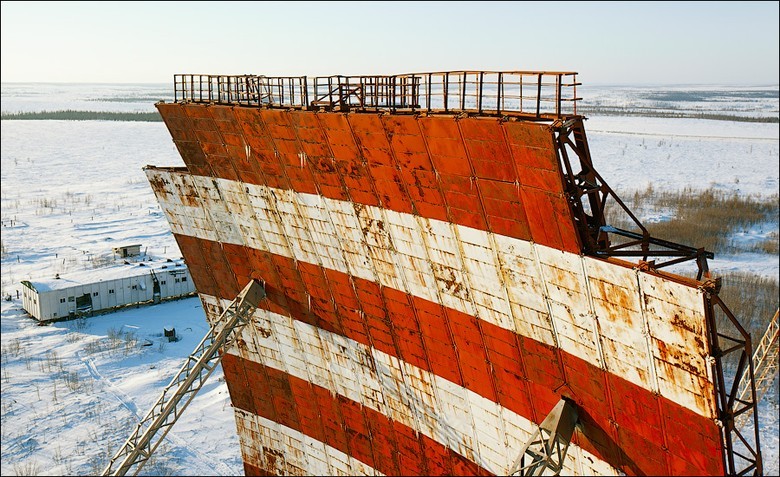
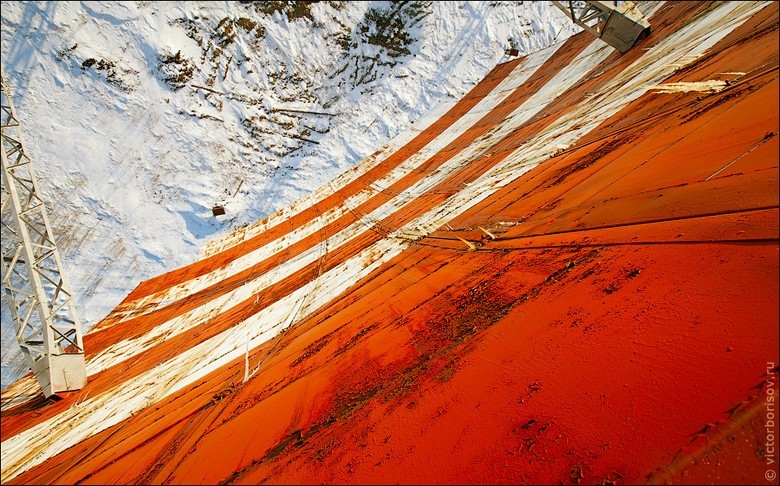

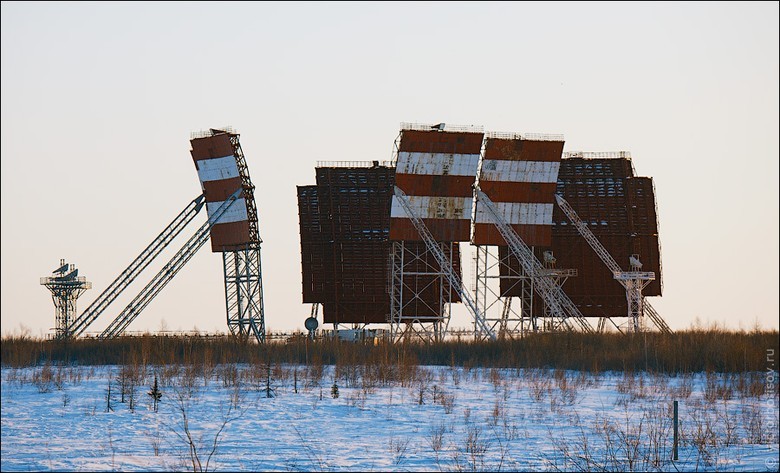
Nearby were technical buildings with equipment, warehouses, a diesel power station and barracks. As a rule, the stations were built near the devil on horns - in deserted areas, far from roads and any civilization in general. Each object was completely autonomous and depended only on the periodic supply of diesel fuel and products.
It is necessary to constantly look after such a large, rather complicated and fragile farm, but civilian specialists were not at all eager to not only live, but even periodically get to these forgotten places. Therefore, the maintenance of the TRRL "North" was assigned to the army: each station was assigned to a military unit . This made sense also because the trunk line addressed the needs of both the national economy and the military.

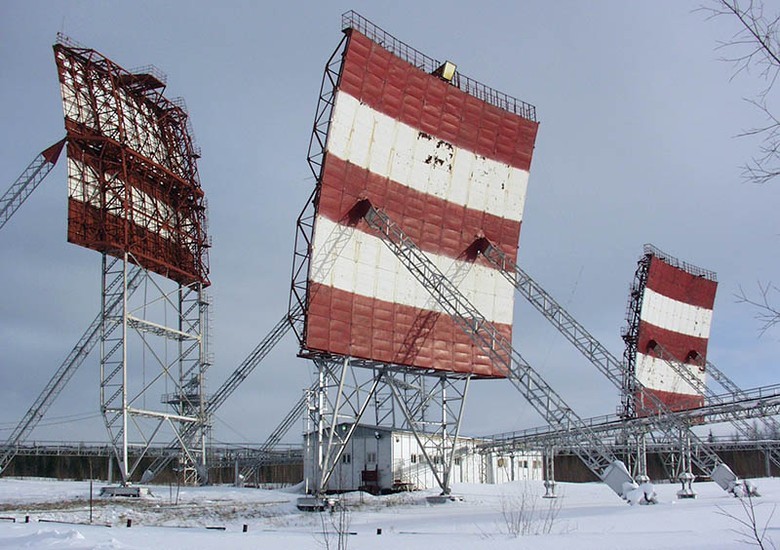
During the entire period of operation of the line, its equipment was constantly upgraded, reliability increased. By 1977, the North was able to achieve an operating rate of 99.99%: despite all the difficulties of providing a tropospheric communication, the loss of a signal even for one minute was already considered an emergency. In the most loaded directions, the number of channels was increased to 72-84.
TRRL "North" regularly served until the 1990s. However, the development of satellite communications and the collapse of the USSR led to the fact that the stations began to preserve one after the other - in fact, to close. The last of Horizon-M ceased operations in 2003.
The Oka station (in the lower right corner) near the village of Gyda in 2012:

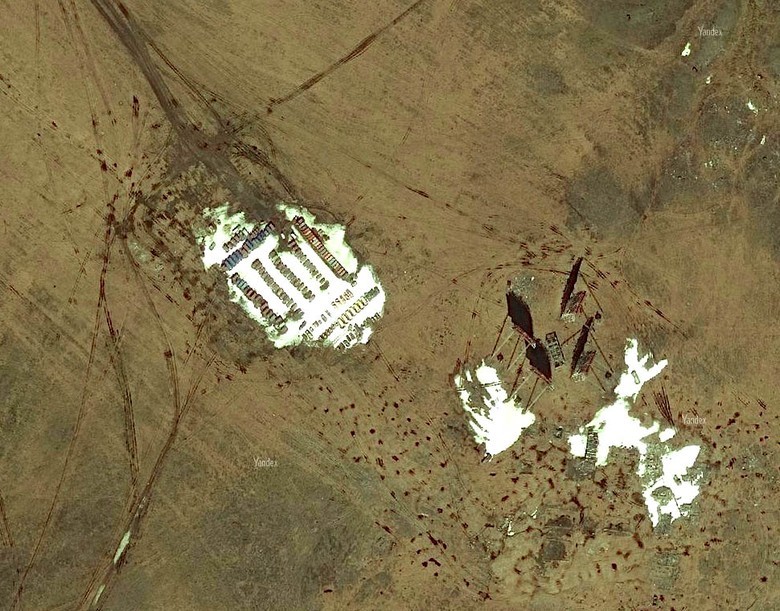
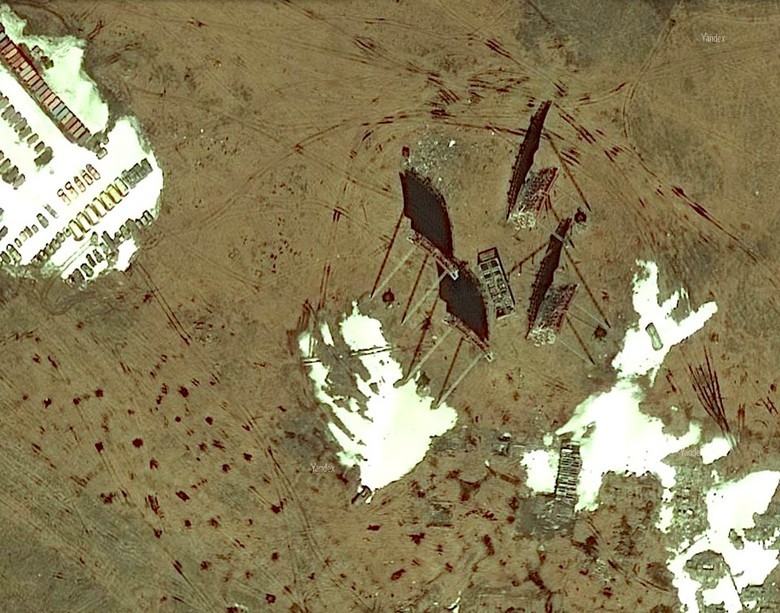
Today, most stations are abandoned and looted. At some stations located near the settlements, the buildings are adapted for warehouses. According to rumors, at the most remote sites the infrastructure has remained almost untouched.
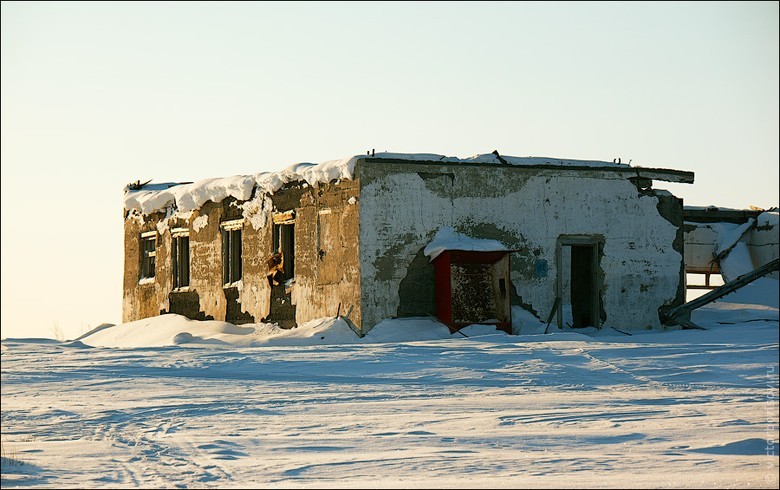
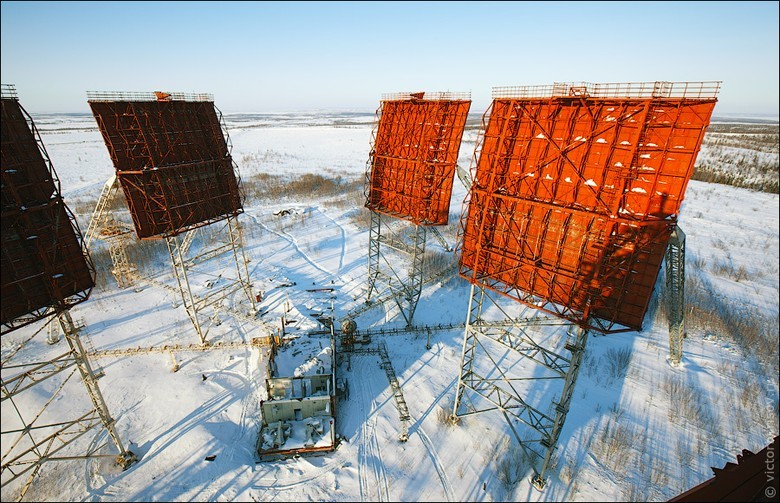

This fate befell not only the Russian "North", but also many American stations of the radio-relay tropospheric communication. For example, a line built in the 1950s and transferred to the management of Japan in 1974. The American counterpart of North, the White Alice line in Alaska, lasted until the 1980s: because of the development of satellite communications, it was taken out of service and for 20 years some of the stations were rebuilt, and most of them were demolished. But some of the objects have been preserved until now, having turned, like the TRER "North" station, into relics, monuments to communication technologies.
Source: https://habr.com/ru/post/400497/
All Articles